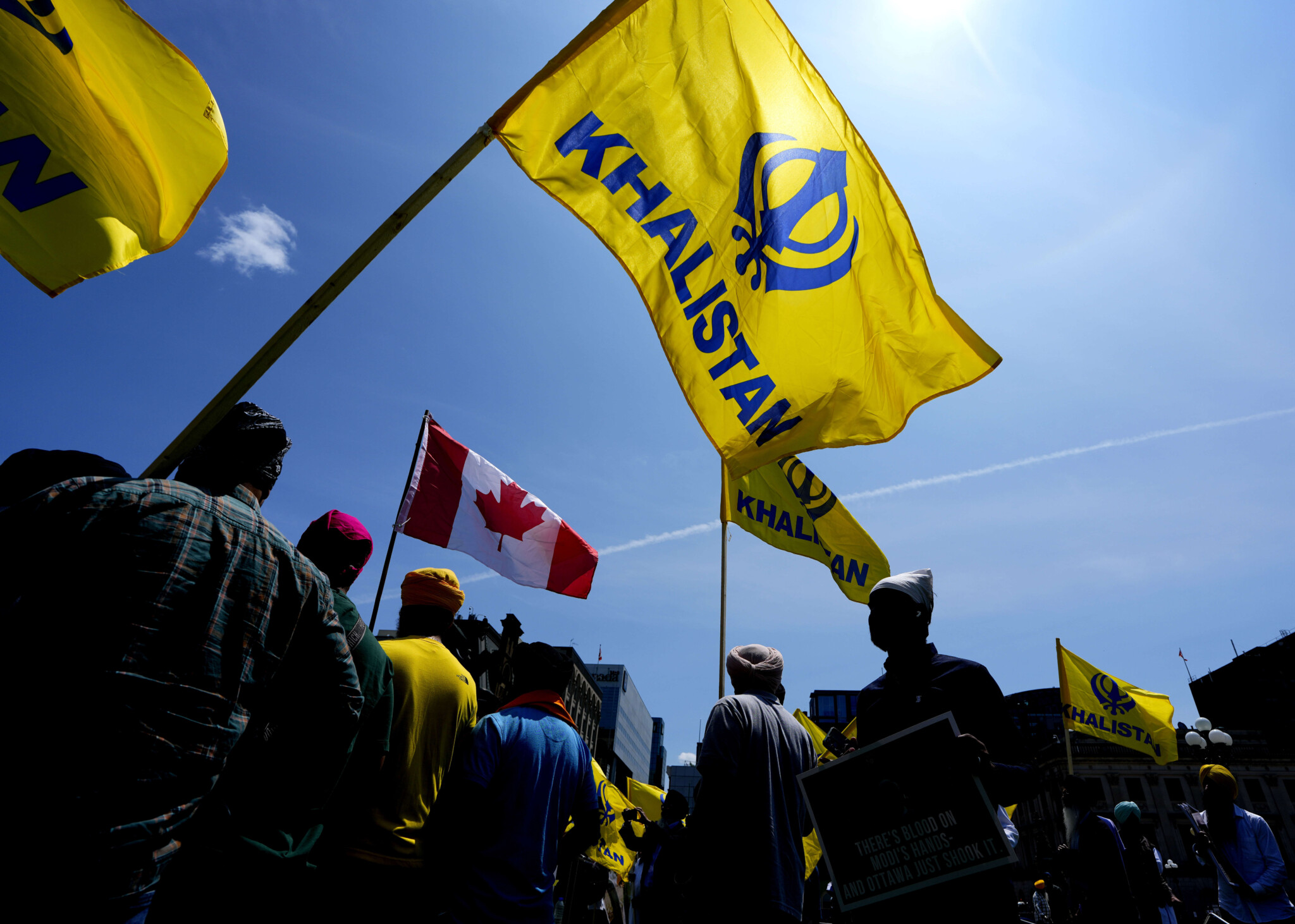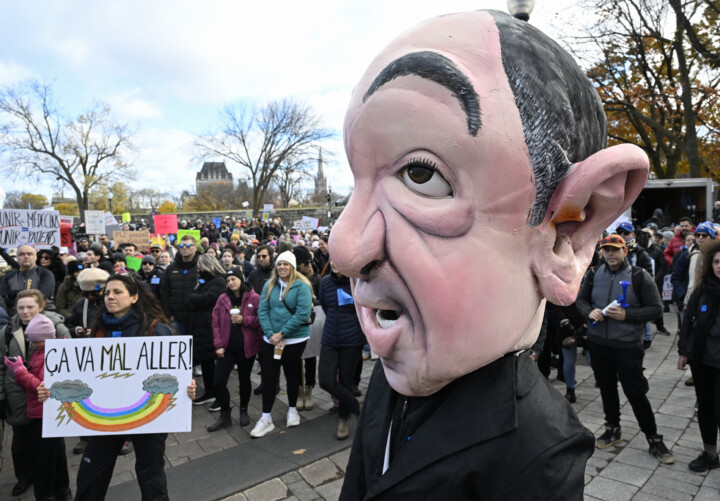Multiculturalism is great, but it needs a Canadian core
By Mathew Giagnorio, writer, journalist, and podcaster
Pierre Poilievre’s recent comments about immigration policy have focused mostly on technocratic questions about supply and demand. They haven’t addressed more fundamental ones about Canadian culture, society, and values. Although these types of conversations can be fraught, there’s an urgent need for us to have them. The evidence over the past few years is clear: Pluralism without cohesion is just fragmentation.
Multiculturalism is often treated as Canada’s sacred doctrine, untouchable and unassailable. But doctrines without scrutiny become dogmas. And today, multiculturalism in Canada is dangerously adrift—ungrounded, relativistic, and increasingly weaponized by the illiberal ideologies it once sought to resist.
What began as a noble experiment in inclusion has mutated into a polite paralysis. In the name of “diversity,” we’ve lost our voice. In the name of “respect,” we’ve ceded space to imported theologies, political extremism, and identity fundamentalism that actively undermine Canadian values.
Multiculturalism must be saved—from both its critics and its defenders. To do that, it must be re-anchored in a civic core: liberal democracy, individual rights, secular governance, and pluralistic tolerance.
This was, in fact, the original intent. Pierre Trudeau’s multiculturalism policy in 1971 was tied explicitly to a strong federal state and Charter values. It was never meant to license tribalism, parallel legal systems, or ideological silos. It was about integrating new Canadians into a shared civic framework, while respecting their cultural backgrounds— but not surrendering to them.
Too often today, multiculturalism has morphed into moral relativism. We turn a blind eye to honour-based violence, communal isolation, dissidents being threatened within our borders, or extremist clerics preaching anti-democratic values, because to challenge these would be “intolerant.” We call it tolerance. But it’s cowardice.
A Canadian multiculturalism with a spine would:
- Defend freedom of expression, even when it offends;
- Ensure secular equality under the law, especially for women and religious minorities within minority communities;
- Require civic education and language training for all newcomers;
- Investigate and expel foreign-funded entities preaching hate.
This is not about cultural supremacy, it’s about civic survival. Diversity is a strength only when it is nested within unity. Without a shared Canadian core, multiculturalism becomes a loose confederation of tribes, each competing for power, each resentful of the others, none loyal to the whole.
Canada is worth welcoming people into. But first, we must remember what it stands for.
In the digital battlefield, AI is the new threat multiplier
By Amal Attar-Guzman, content editor at The Hub
Over the past year, we have seen major rapid developments in the world of AI, from text chatbots like Gemini AI, DeepSeek, to Google AI Mode, to AI-video generators like HeyGen, which now has more than 15 million users across 179 countries.
With this has come conversations in the digital media space about whether these new AI tools will upend the news media or empower it. Regardless of your position on the issue, AI is here to stay. And given that it will become a constant in our lives, information accuracy and the verification of facts are more necessary than ever, especially when it comes to life and death subject matter like war reporting.
Case in point: the Israel-Iran war. Everyone has a view on the conflict, a view likely shaped by the words and images they’ve seen flying around their social media channels. But BBC Verify Live, the broadcaster’s new AI fact-checking unit, has found that millions have viewed fake, AI-generated videos and images, unleashing a wave of misinformation and disinformation on X and other social media platforms, causing major confusion around what’s accurate and what’s not.
In one instance, a viral AI-created image showed dozens of missiles striking Tel Aviv, exaggerating Iran’s military response. The X post reached over 27 million views. In another instance, there was a widely shared AI-generated video on X and Facebook that depicted Iranians on the streets of Tehran chanting, “We love Israel.”
Professional news agencies and institutions have also fallen victim to or knowingly published false videos and images.
This video, published by Iran's Fars news agency, which is closely affiliated to the Revolutionary Guards, claims to show Tel Aviv after the 12-day war with Iran.
— Shayan Sardarizadeh (@Shayan86) June 25, 2025
However, the clip is AI-generated and fake. It's been previously published by a TikTok user who creates AI videos. pic.twitter.com/uawGFiyLs1
Not only can this AI-generated content start or exacerbate conflicts, but it can also cause election interference. One only has to look at Ivory Coast, where, in late May, fake AI-generated images and videos traced back to “neighbouring countries,” spread rumours of a false coup, which were then promoted by pan-Africanist influencers. This disinformation campaign targeted President Alassane Ouattara, who is seen as pro-West and is poised to seek a fourth term in upcoming presidential elections later this year.
Media literacy in the age of the internet has always been a challenge. But now with the new frontier of AI, where innovations are materializing at a much faster pace, the challenge is even more daunting.
Anyone from anywhere can now create believable false images and videos that look more realistic by the day. At its best, AI can increase efficiency, improving someone’s creative process. At its worst, it can manipulate public opinion in times of conflict and war, further inflaming underlying societal tensions.
While all of this seems overwhelming, there are still some best practices that journalists, politicians, and even the average person can follow. Preventative measures range from not immediately trusting unknown social media accounts, AI chatbots, and viral posts, to learning new skills such as reverse image searching and detecting AI-generated content.
Great first steps to address this threat multiplier.
Young Canadians already feel like they’re in a recession
By Sabrina Maddeaux, director of communications at Global Public Affairs, columnist and political commentator
Depending on which expert you ask, Canada is either already in a recession or likely headed towards one. Major financial institutions, including BMO, National Bank, and TD, say the country’s shrinking GDP could meet the definition of a recession (two consecutive quarters of negative economic growth) later this year. Yet economists like Dalhousie University’s Lars Osberg say other indicators like a rising unemployment rate, declining labour force participation, and decreasing average income mean we could already be in a recession.
Whether or not you feel like we’re already in a recession likely depends on how old you are. Younger Canadians have already been bearing the brunt of Canada’s economic malaise for nearly a year now, with surging unemployment and plummeting labour force participation that far outpaces that of older generations. The June unemployment rate across Canada for those aged 15 to 24 hit a new decades-high (outside of the pandemic) at 14.3 percent—in Alberta, it’s 16.4 percent, and in Ontario, the country’s supposed economic centre, it’s 16.5 percent. Moreover, long-term unemployment (job seeking for longer than six months) is rising in this demographic.
While the national unemployment numbers for the next age range, 25 to 54, are at a rising, but much lower 5.3 percent, it’s logical to assume the sub-cohort of that bracket in their late 20s and early 30s is also struggling at much higher rates.
Social media anecdotes about job searching suggest the pain extends beyond just students scouring for summer jobs to recent graduates, young professionals, and even mid-career employees. Hundreds of applicants for every job. Few, if any, responses. Understandably, any sense of hope is harder and harder to find.
Combine that with disproportionate exposure to high housing costs and the soaring cost of living, and Canada’s young people are getting absolutely crushed.
The situation is dire. We are at risk of multiple lost generations, not just financially, but to the emotional and social impacts of economic disenfranchisement, hopelessness, and the resentment of once again being left behind as older generations experience a vastly different reality.
Politicians must act now to offer solutions to young Canadians if they don’t want them to entirely lose faith in our systems and institutions.









